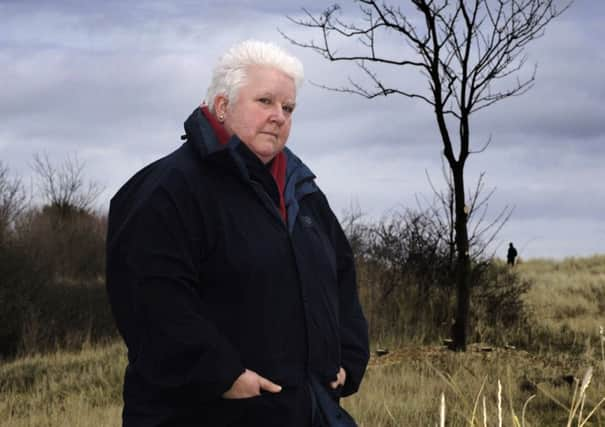Book review: Northanger Abbey, Val McDermid


Northanger Abbey
Val McDermid
The Borough Press £14.99
JANE Austen grew up in 18th century England. Hers was a class-ridden world of tittle-tattle, formality and decorum, of starchy dances, petty snobberies and hauteur in which the politics of matrimony prevailed. Subversive by nature, Austen’s intelligence and talent brought into existence six major novels, each still as piquant as on the day of publication.
Northanger Abbey, the first of those books to be written, became the last to make it to print. Val McDermid’s breezy, vital, inventive reworking of it radically shifts the location from Bath to Edinburgh and propels it two centuries forward, embracing text-speak, the worlds of the Twilight movies and novels, wifi, laddism, souped-up cars and present day power shifts between generations.
Advertisement
Hide AdAusten’s heroine, Catherine Morland, here known as Cat – “on the basis that nobody should emerge from their teens with the name their parents had chosen” – is in thrall to gothic literature. Vampires stalk her imagination. Her reading list – with a strictly Scottish twist – includes the Poltergeist Plague Of Pabay, Shapeshifters Of Shuna, and Killer Kelpies Of Kerrera.
As the story progresses, McDermid’s relish of these farther gothic extravagances flourishes, ever mindful of Austen’s original wherein Catherine is obsessed by such novels as Castle Wolfenbach, Necromancer Of The Black Forest and Horrid Mysteries.
You might describe McDermid’s Cat as having “manners just removed from the awkwardness and shyness of a girl… her mind about as ignorant and uninformed as the female mind at seventeen usually is.” Those are Austen’s words, and the thoroughly 21st century Cat is their true inheritor.
Among Austen’s abiding felicities is a gift to make us relish the lively company of her characters, be they dark or emitting light. McDermid maintains this magnetic quality. The novel’s hero, Henry Tilney, a trainee lawyer, dry-witted, generous and decent, is Cat’s ideal match, handsome beyond the requirement of natural selection and, in essentials, a romantic.
In Edinburgh, far from her sheltered life as a vicar’s daughter in deepest Dorset, Cat is introduced to Henry at a dance class where she is the rookie and he the tutor, and when she learns that his family home is Northanger Abbey in the Scottish Borders, she almost swoons, envisaging “The kind of historic building that ends up starring” – or so she hopes – “in a film adaptation of some heart-stopping book about vampires or Jane Austen heroines or ancestral ghosts.”
Cat joins the Allens, neighbours from Dorset, on their annual festival junket, and thus Edinburgh en fête provides McDermid’s remade setting with a transforming, transfixing buzz that entertains Cat and absorbs the reader.
Advertisement
Hide AdShe soon makes friends with Henry’s gentle sister Eleanor, and with the flighty Bella Thorpe, whose boorish brother John, a banker, forces unwanted attentions on Cat. It soon becomes obvious that if Cat and Henry’s relationship is to flourish, it is the imposing General Tilney – Henry and Eleanor’s rigid, disciplinarian father – who must be impressed. And with his approval comes the coveted invitation to join the Tilneys at Northanger.
The novel’s side plot – Bella’s engagement to Cat’s brother Jamie, followed by her flirtation with Freddie Tilney, the older brother of Henry and Eleanor now home from Afghanistan on leave – adds a vital tang of disapproval to the mix. The moral high ground is never in doubt.
Advertisement
Hide AdNorthanger Abbey, with its forbidden tangle of corridors and rooms, its hidden objects, becomes fertile ground for Cat’s rampant fantasies, fuelling the notion that the Tilneys are, in truth, a clutch of vampires. McDermid relishes both satirising and celebrating the comic-gothic genre – at times quoting Austen’s text verbatim.
Readers familiar with the original will appreciate McDermid’s panache in making it come so formidably to life. Her obvious pleasure in the task is as contagious as Austen’s wit. McDermid introduces a plot twist which brings the story bang up to date, yet is utterly plausible. Alas, there are earlier sequences where the opposite is the case, (Cat’s not using her phone to avert unnecessary crises, for example), but these are trifles which do not detract from the beautifully landed, sardonic finish.
In McDermid’s conclusion, “The moral or message of this story is hard to discern. And that is as it should be…”, Austen fans will hear an echo of “I leave it to be settled by whomsoever it may concern whether the tendency of this work be altogether to recommend parental tyranny, or reward filial disobedience.” The only possible recommendation is to acquire this book and read it.